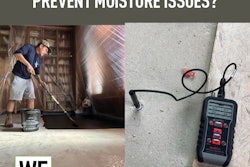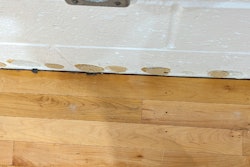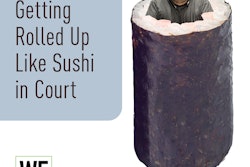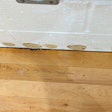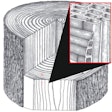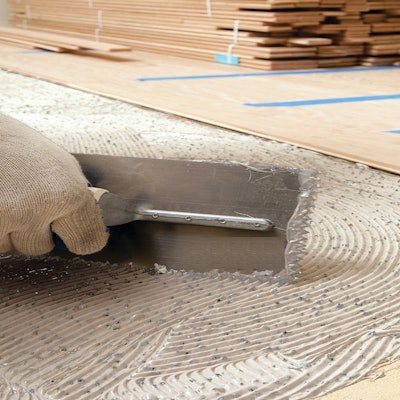
It’s no secret that one of the most common causes for the failure of hardwood flooring installations is the wood being exposed to excessive moisture, and that moisture may come from many sources above and below the flooring. Some of the most common sources include:
1) Topical water: mopping with too much water or leaks from plumbing, roofs or walls.
2) Relative humidity in air: uncontrolled and/or unconditioned interior environments.
3) Hydrostatic head: liquid water forced up through the concrete slab under pressure.
4) Moisture vapor: moisture vapor transmission through the pores of any concrete slab.
Because wood is hygroscopic (which in layman’s terms means that it absorbs or releases moisture due to its environmental conditions), it will expand and contract. Exposure to high moisture levels from any of these sources can lead to cupping, crowning, end-lifting, popping or other undesirable effects. This presents a problem calling for an obvious solution: Moisture exposure must be controlled. But how do you know how much moisture is or will be present, and which products will offer enough protection for the flooring?
Most wood flooring manufacturers do not provide a warranty against damage caused by exposure to liquid water (topical or hydrostatic head). Additionally, most have limited the moisture vapor exposure of their hardwood to 3 pounds of moisture vapor per 1,000 square feet per 24 hours as measured by the calcium chloride test, or 75% RH as measured by in-situ probes. Installers can easily detect visual evidence of liquid water on a slab, but the amount of moisture vapor coming through any slab cannot be seen. Moisture vapor transmission and slab RH both require tests with very specialized equipment and have strict procedures that must be carefully followed to get accurate results, and calcium chloride tests require 72 hours. Equipment, time delays and following precise procedures are often deterrents causing installers to skip moisture-testing slabs.
Equipment, time delays and following precise procedures are often deterrents causing installers to skip moisture-testing slabs.
Failure to measure the moisture vapor transmission or RH of the slab in most cases will expose the installer to the risk of callbacks and potentially having to replace the floor if any type of failure occurs. Many adhesives used today to bond hardwood flooring to slabs have a certain degree of natural moisture vapor reduction properties, and many have been developed to enhance this moisture protection capability. But even if typical “all-in-one” products claim to protect against very high moisture vapor transmission rates, if testing is not performed, the risk is placed on the installer.
Another consideration in moisture testing is that the measurement represents a snapshot in time. If this snapshot is taken during a dry period, moisture levels in the soil, and subsequently moisture vapor transmission through the slab, can increase during wetter periods. Flooring and moisture mitigation systems will not be covered under warranty for damages from moisture transmission in excess of system limitations—even if test results show acceptable moisture levels at the time of installation.
While all this may sound discouraging, recent technological advances in the chemistry of installation products have resulted in high-performing moisture vapor protection, and some products now offer unlimited moisture vapor protection. With these products, the manufacturer assumes the risk, not the installer.
Professional contractors take their work seriously and want to do the best possible job to eliminate callbacks and build good reputations, which leads to more work. Understanding moisture movement through slabs, how to measure moisture, and ultimately how to protect against excessive moisture levels is critical to successful installations.















